LED Wall
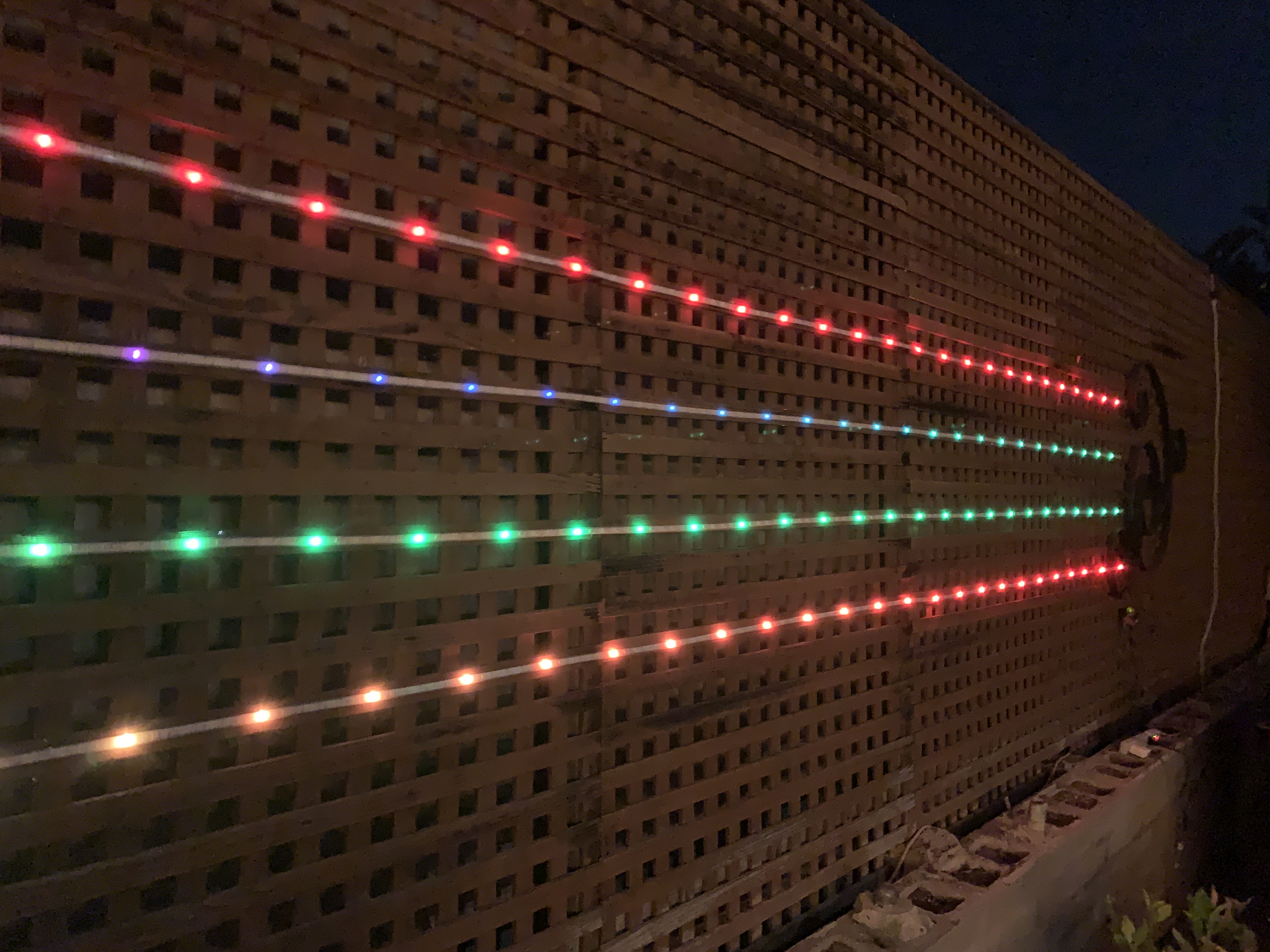
In sophomore year of college, I assembled a decorative wall in my four-person apartment's common room using four individually addressable RGB LED strips I received as a birthday gift. Once we programmed some animations into the Arduino I hooked up to drive the logic, it looked remarkably good as a decoration considering the relatively low resolution. In July 2022 I reassembled the setup of the wall outdoors and programmed some new animation routines for it.
Feel free to download and tinker with the Arduino sketch running in this demo program here as well!
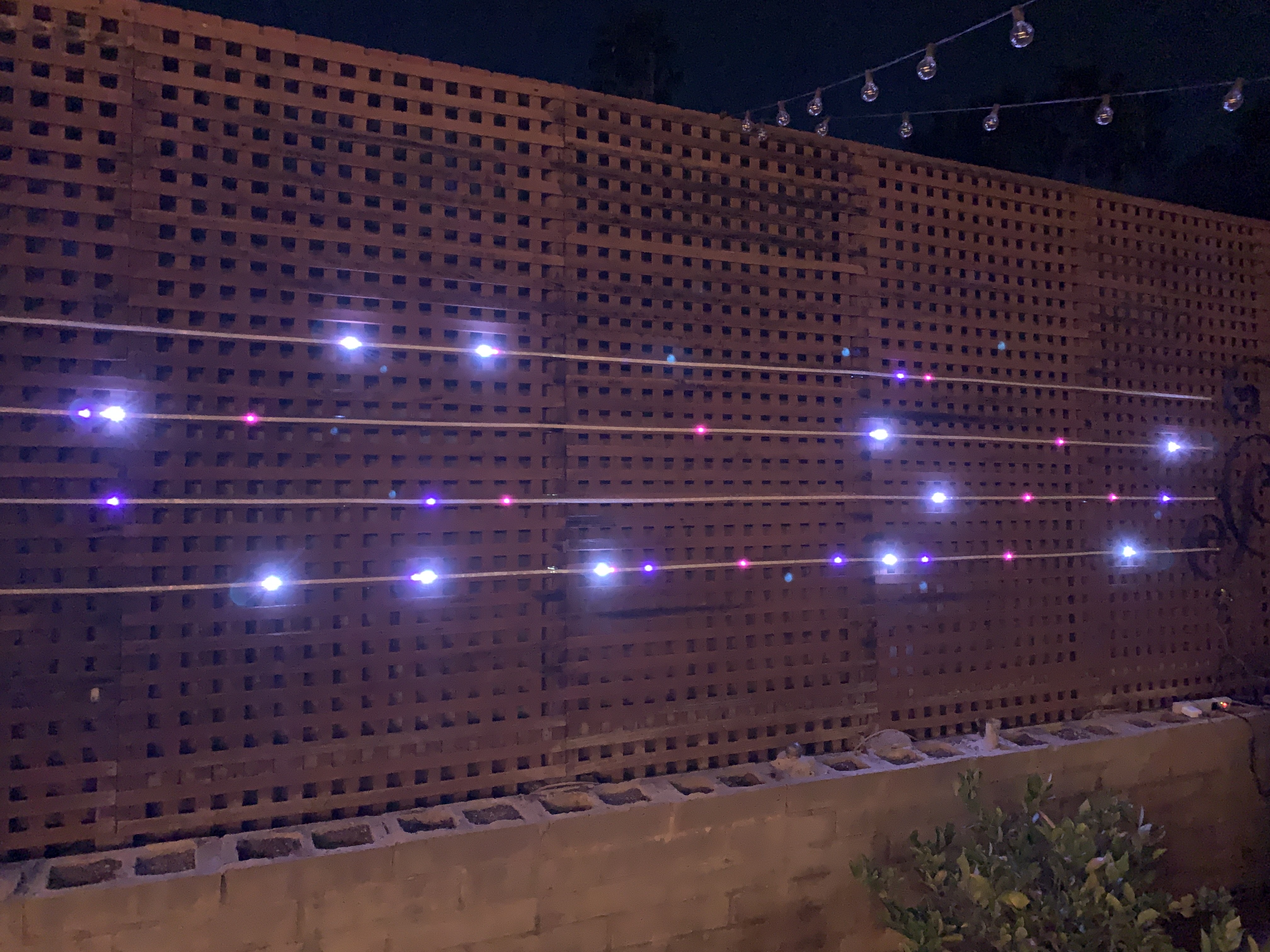
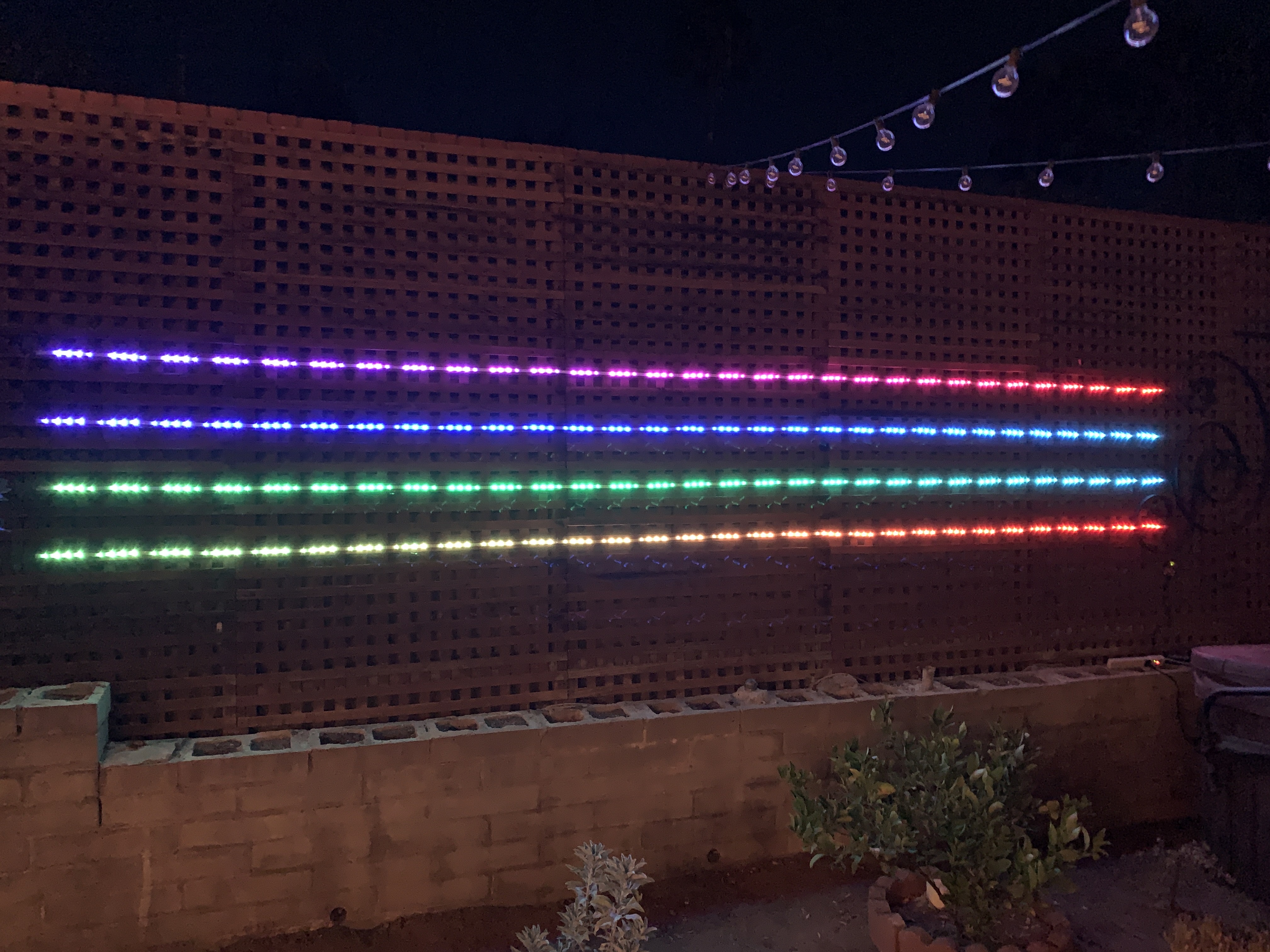
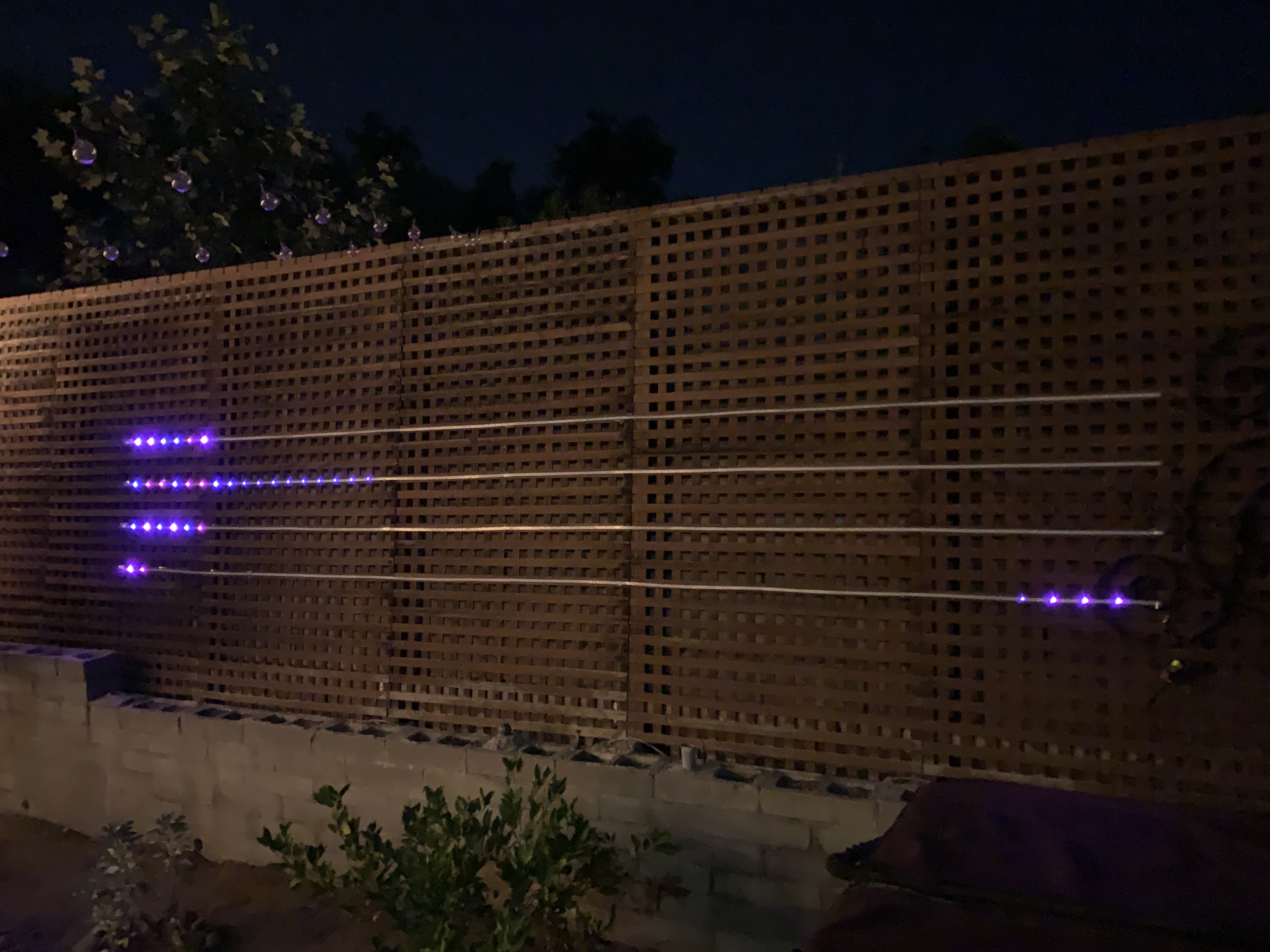
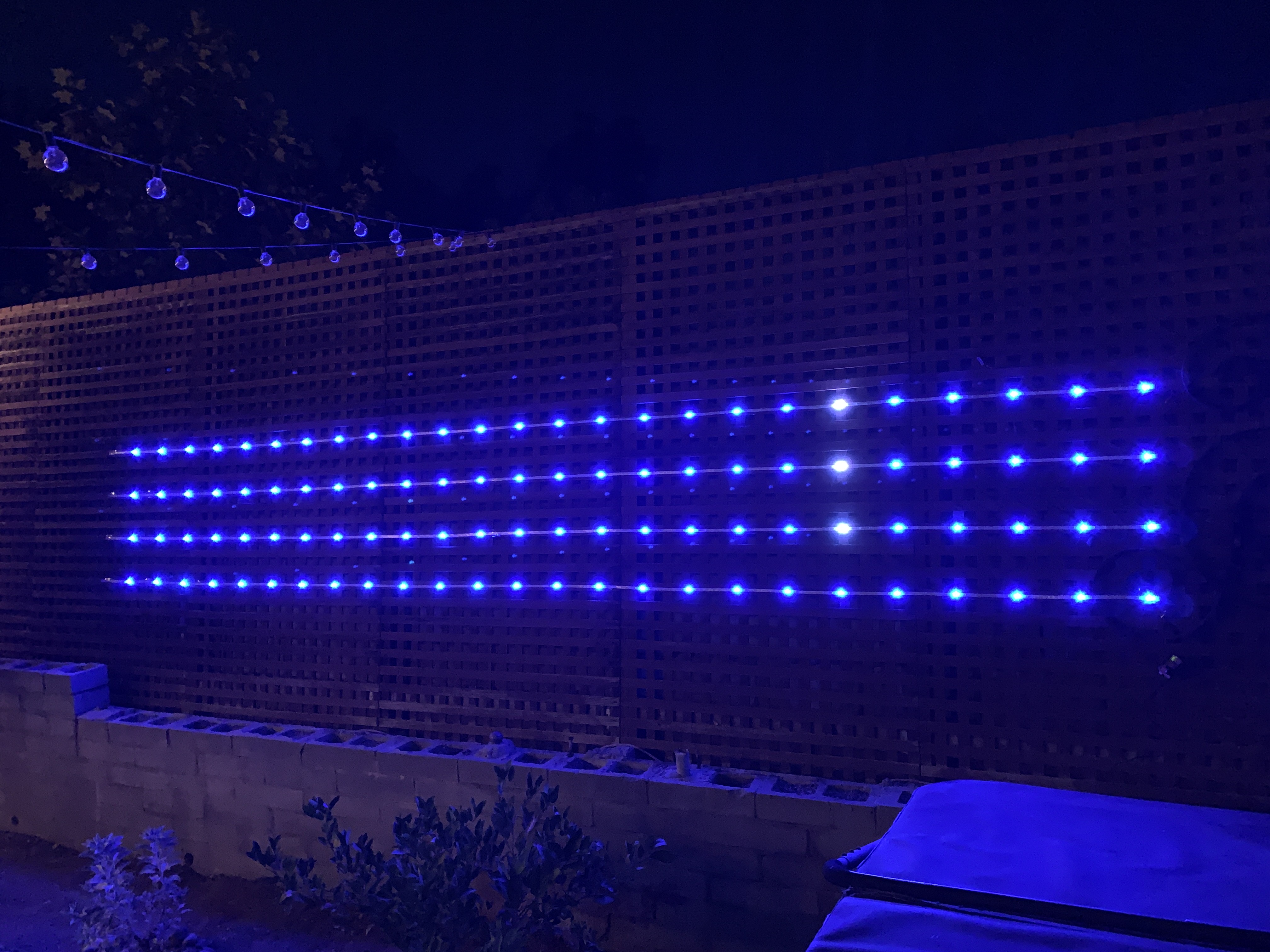
Still images from animation tests.

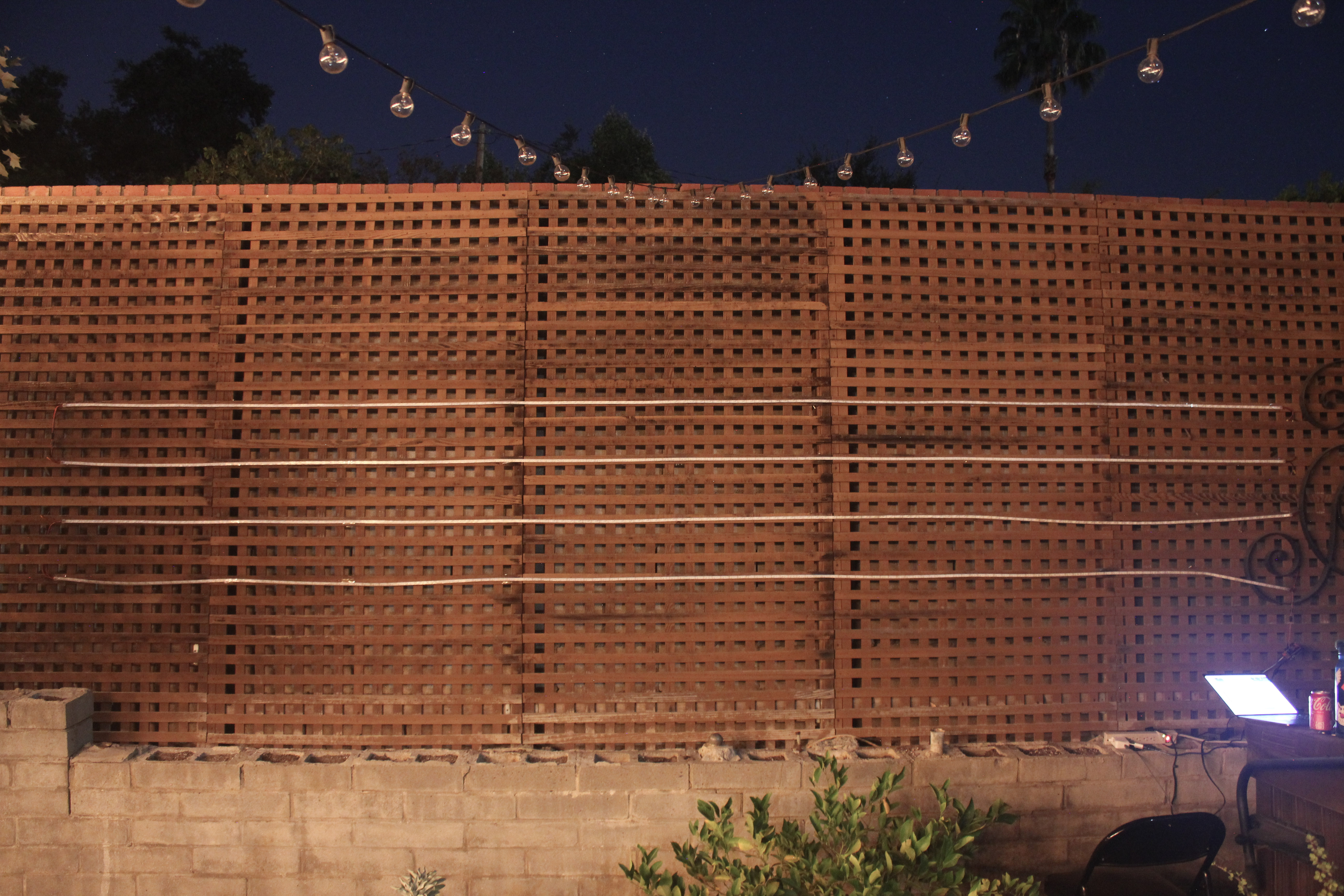
Assembly.
I've tried different mounting methods over the course of different iterations of this wall, but this iteration simply used packing tape so I could put it up and take it down quickly.

LED strip shield.
With any setup that uses this many LEDs, current draw becomes a major issue. Although this LED wall uses four 150-LED strips (30 LEDs/m) for a total of 600 LEDs, all the animations I've written for it rarely use more than a fifth of that, and never at full brightness.
To handle power distribution and make it easier to prototype with LED strips, I built a custom LED strip Arduino shield with a built-in JST connector that can be plugged directly into a DC power jack and the starting end of the LED strip.
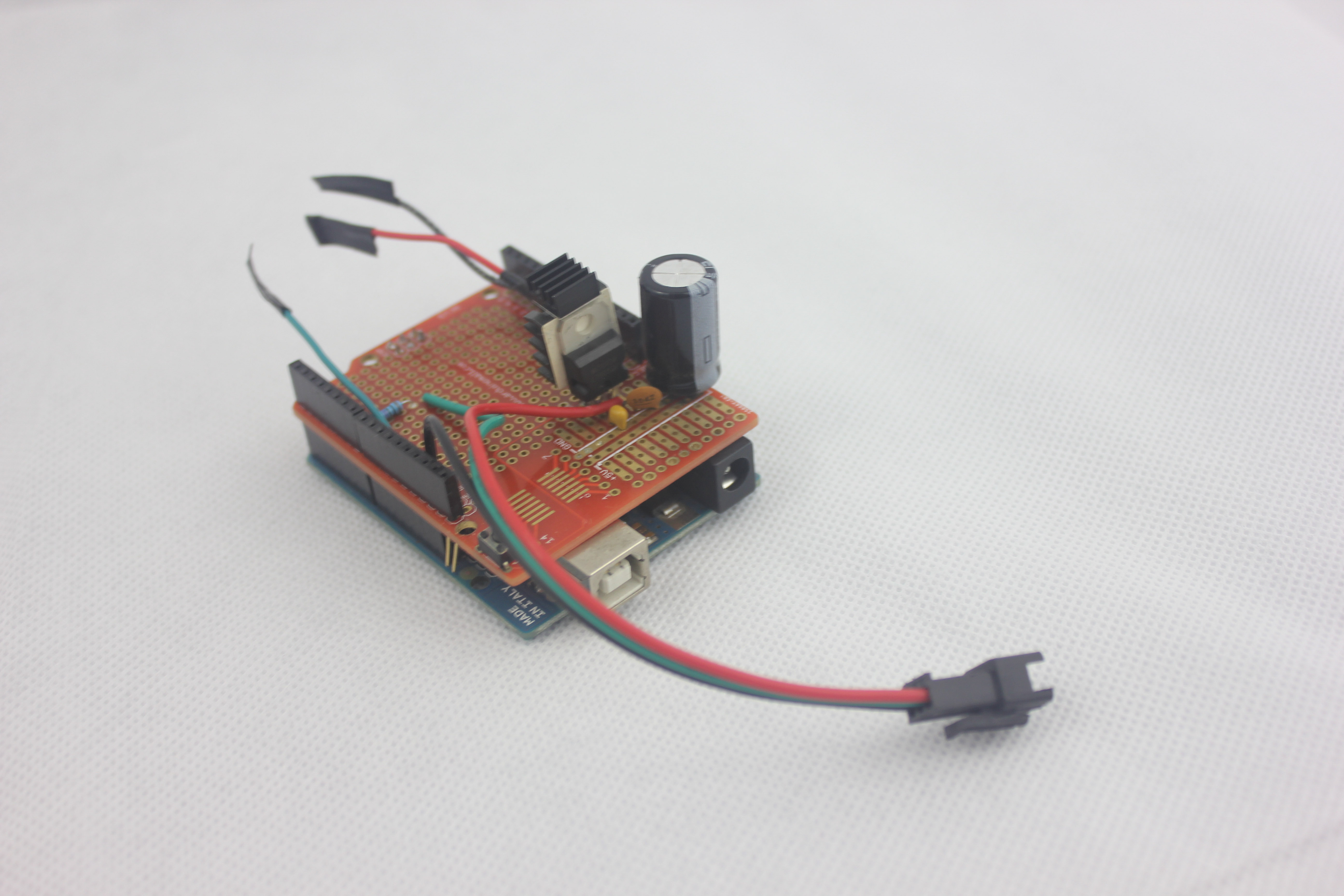
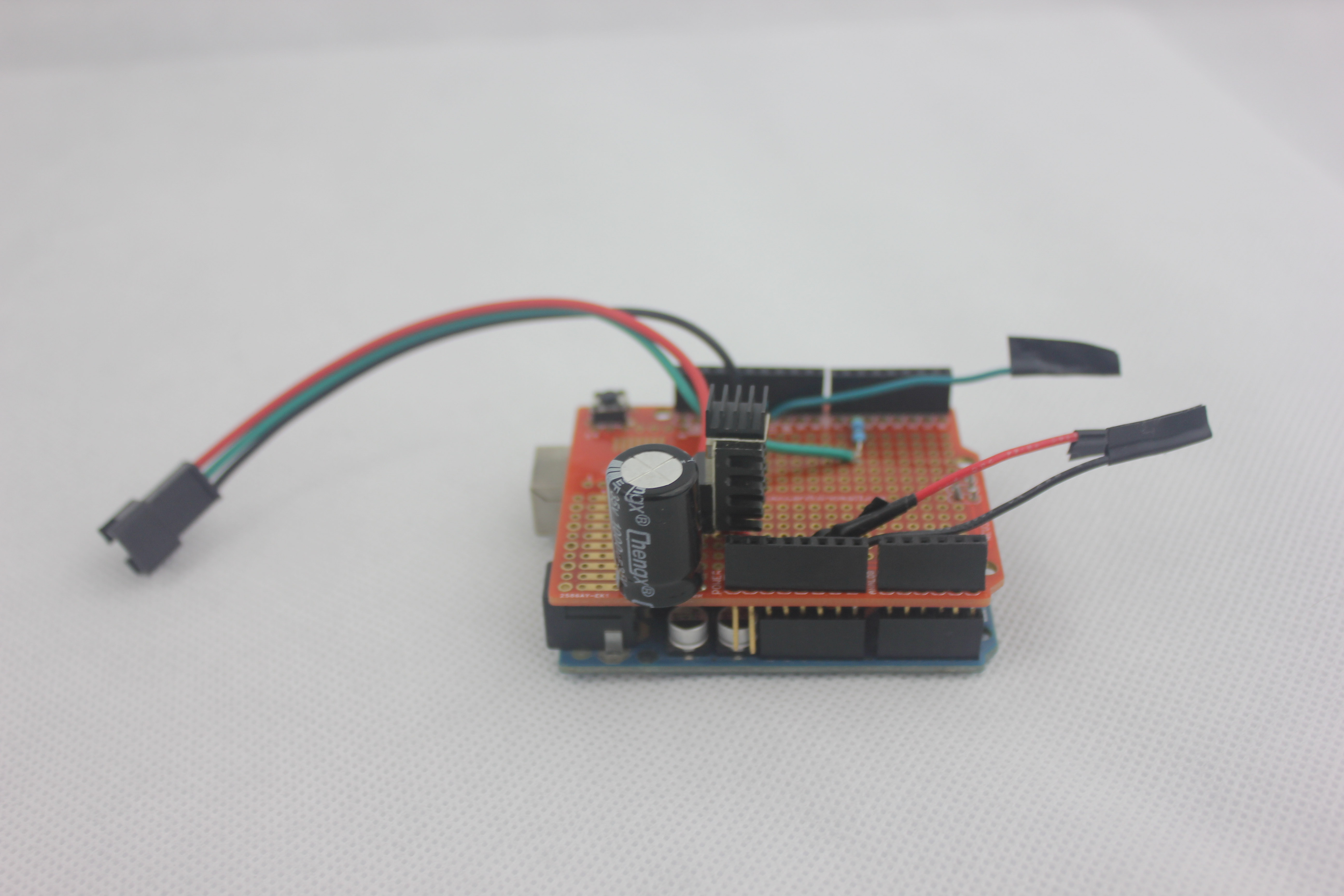

The shield features additional components to better protect the LED strips, as well as an addtional voltage regulator with heat sinks to allow for a higher current output than an Arduino can provide on its own. This works for smaller setups, but anything more heavy-duty than this would require a dedicated power supply.